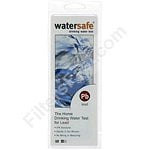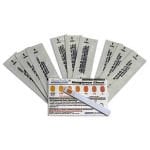Since we started this blog articles about ‘new’ dangers posed by lead in water have come up from time to time… and we have posted articles about them as soon as we became aware of them. Does that make us sensationalists or couriers of messages and news intended to make people cognizant of potential dangers posed by the possibility of lead in their drinking water?
You will have to answer that question for yourself, and while you ponder that query, please also take a moment to think about the possibility that any number of manufacturing errors could possibly result in the improper distribution of lead in brass fittings — as alleged by researchers investigating alarmingly high levels of lead found in water produced by water fountains after technicians took several steps to make them lead-free.
Hidden elements in drinking-water lines can shed large amounts of lead, a toxic heavy metal. And it’s quite legal, even if it does skirt the intent of federal regulations.
University researchers, who uncovered this problem the hard way, have published a case study on the offending hardware in the November issue of the journal of the American Water Works Association.
Lead adds ductility to brass, making it easier to bend or machine into desired shapes. To limit the risk of lead poisoning, U.S. law prohibits new brass plumbing parts in drinking water lines from containing more than 8 percent lead by weight. Yet two shut-off valves containing only about 6.5 percent lead leached toxic amounts of the metal into drinking fountains at the University of North Carolina.
What happened: During manufacturing, the lead did not uniformly distribute throughout the brass, but ended up preferentially settling at or near the surface. As a result, the outside of affected valves—the side visible when looking at a water line (see photo)—slightly exceeded the lead limit. That shouldn’t have posed a health problem, since this surface doesn’t touch water. However, the valves’ interior surface, which does, contained at least 18 percent lead by weight. ( source )
After reading that, and seeing how careful steps taken by knowledgeable people failed to get rid of all the lead in the plumbing of water fountains on a college campus, would you still think us alarmists by giving the topic a few minutes of publicity?
What levels of lead in water pose a danger?
The United States Environmental Protection Agency has ruled that public water systems may not contain more than 15 ppb of dissolved lead and that any system found to have that amount or greater in the water it distributes must take immediate steps to remedy the situation.
While that sounds like a great plan, the fact remains that pretty much all lead found coming out of faucets in people’s homes entered the water at some point after the water left the water treatment facility. Old water service lines, fittings in people’s homes, and older solder used to join pipes all could contribute lead (and other metals) to the water they come in contact with — especially if the water has aggressive tendencies.
Aggressive tendencies? Water can have a bad attitude and start fights? Well, no, but throwing water on someone in a bar or dance club will put them in a bad mood and possibly start a fight.
When we say water has aggressive tendencies, we mean it has low total hardness and/or a low pH; both of which would make the water want to pull elements (metals and other things) out of any surfaces it comes in contact with.
And in conclusion…
Enough evidence exists out there pointing to the fact that dissolved metals in water have a probability of causing health problems that we do not know WHY anyone would not want to test their drinking water (note: tap water and well water can both can contain dangerous concentrations of dissolved metals) for the presence of metals periodically.








